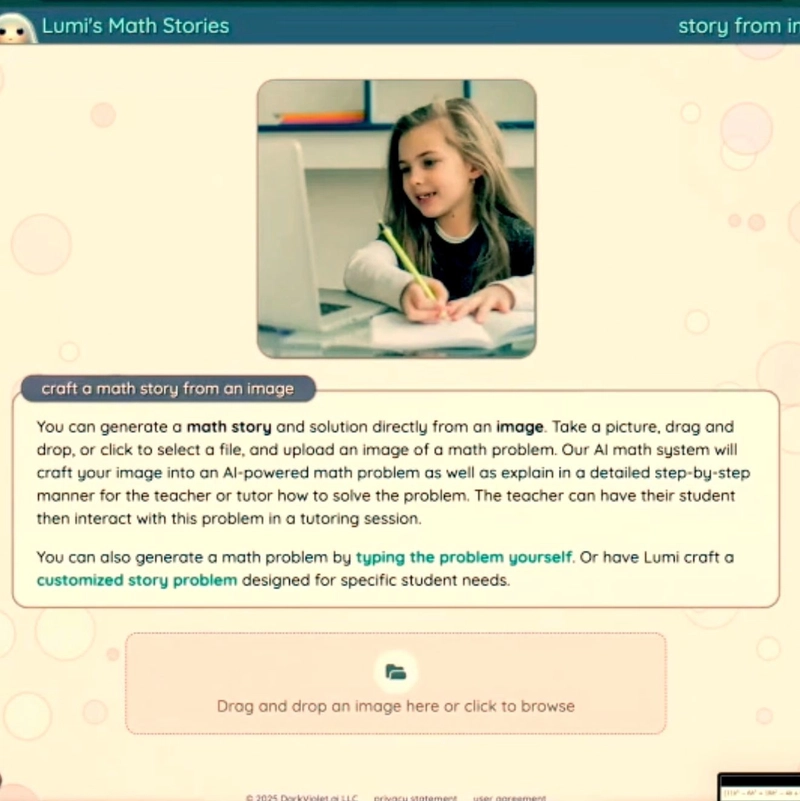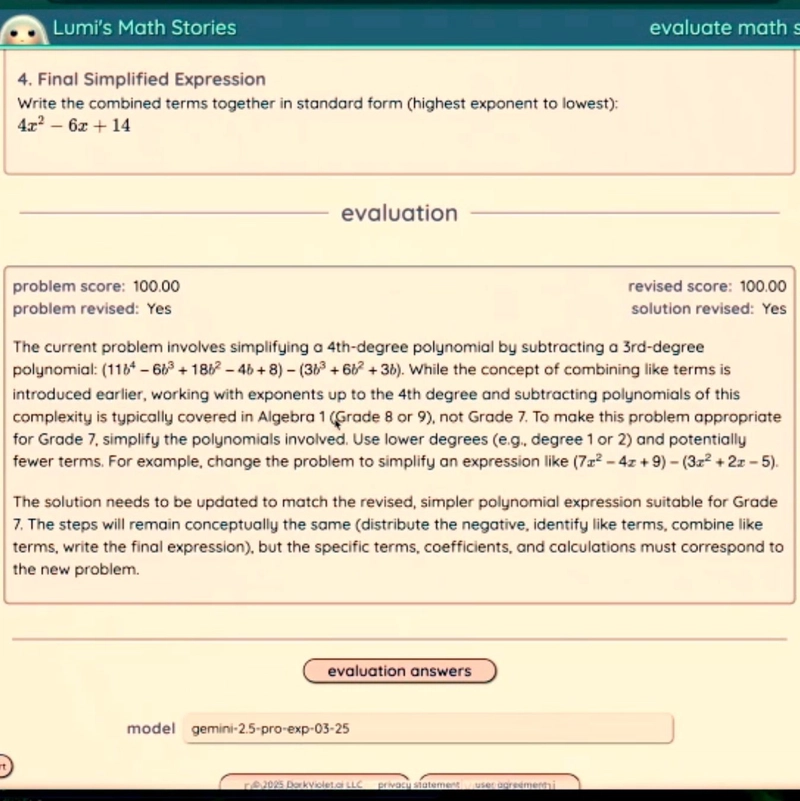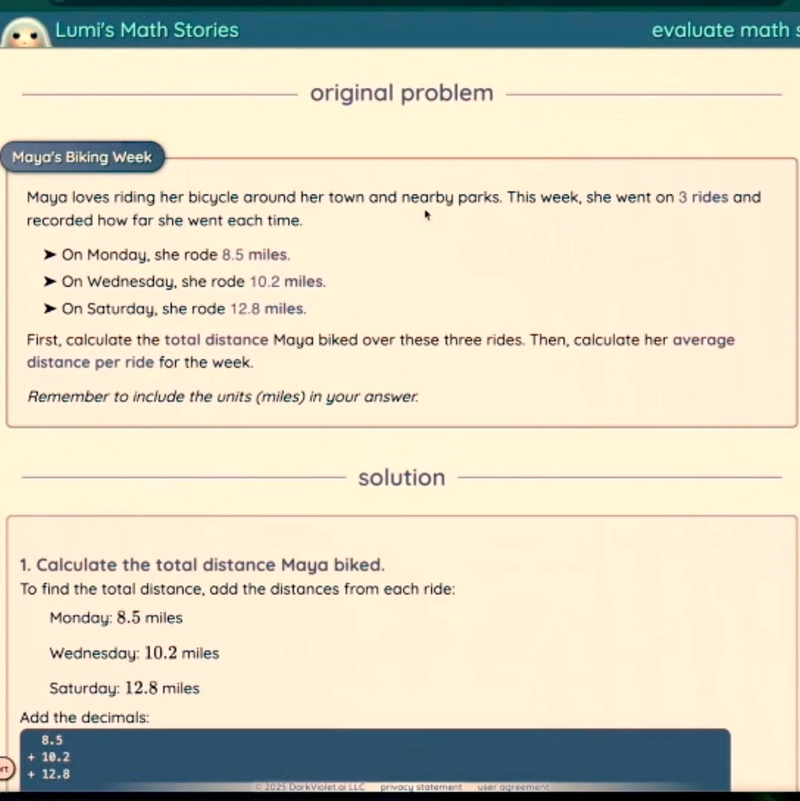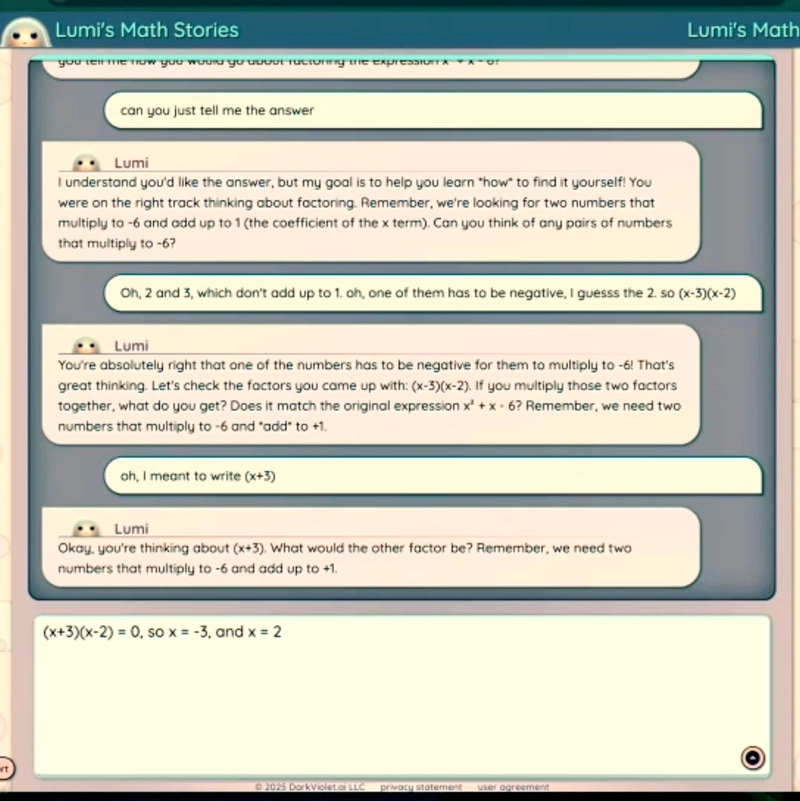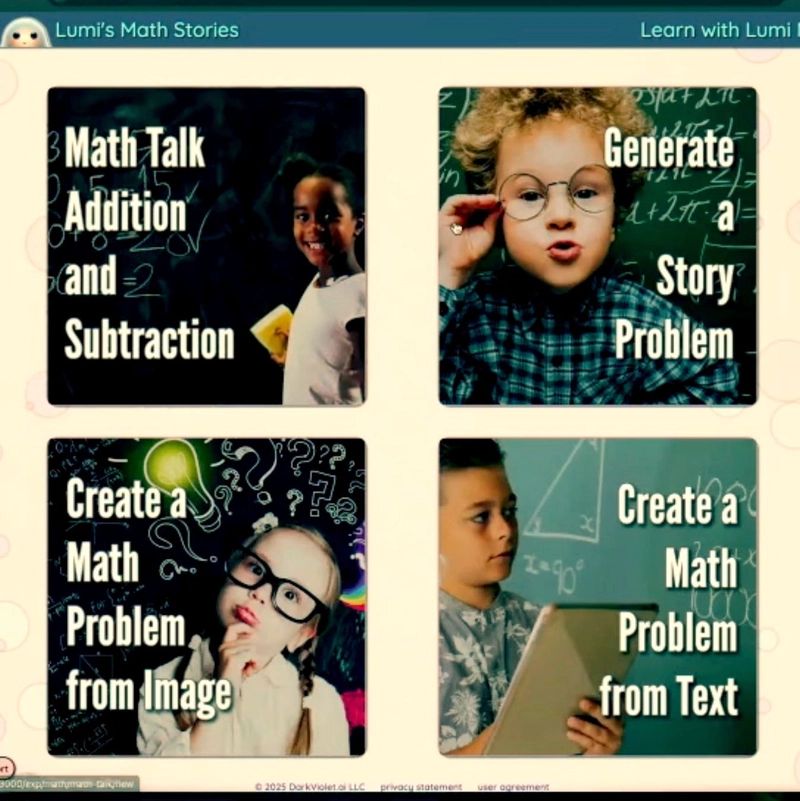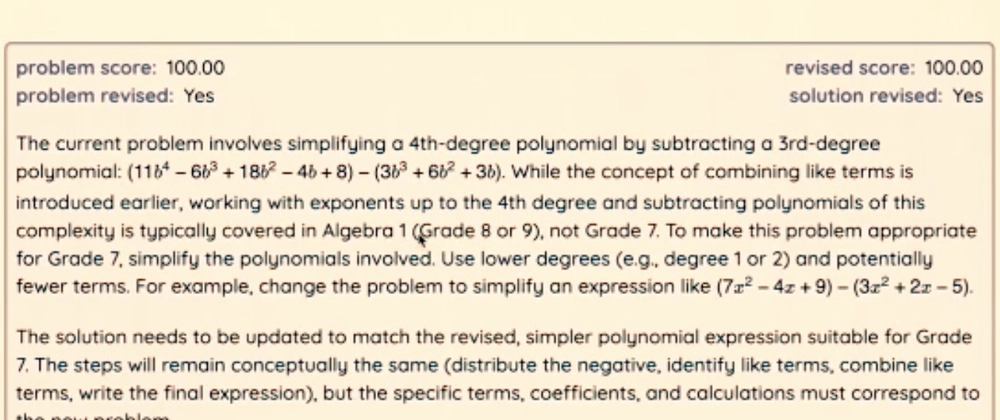
Empowering Teachers Through AI-Enhanced Education
 Evan Marie Carr
Evan Marie CarrSee the video on the 🎥 Learn with Lumi YouTube Channel! In a classroom somewhere in America, a...
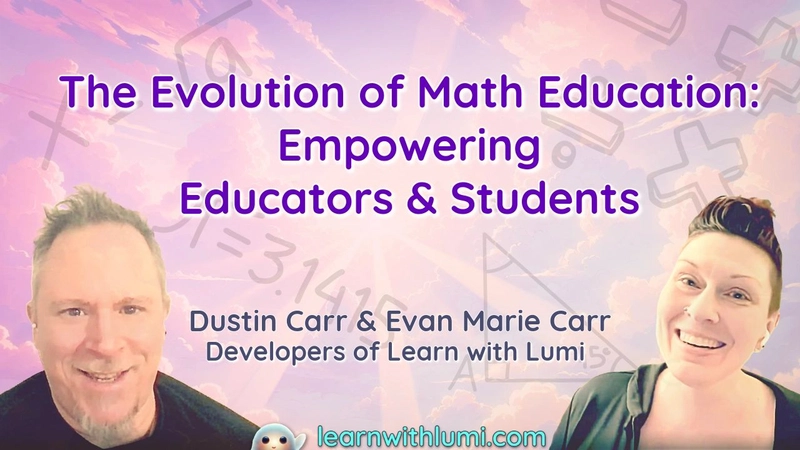
See the video on the 🎥 Learn with Lumi YouTube Channel!
In a classroom somewhere in America, a teacher watches the clock anxiously as she tries to grade a stack of math assignments before her next class begins. Across town, a student stares at his homework, frustrated because he doesn't understand where he went wrong and his teacher won't be able to review it until next week. Meanwhile, a homeschool parent scrambles to prepare lessons for three different grade levels, feeling overwhelmed by the sheer logistics of it all.
These all-too-common scenarios represent the cracks in our educational system that Learn with Lumi aims to repair. In an era where educational technology increasingly attempts to replace teachers, Learn with Lumi stands out with a refreshingly different approach. Co-founders Evan Marie Carr and Dustin Carr have developed a platform that places teachers at the center of the educational experience while providing powerful AI tools to enhance their effectiveness—not replace them.
Keeping Teachers in the Educational Equation
"One out of every 30 people in our society should be dedicated to teaching people," states Dustin Carr passionately. "There's no reason we should ever go below that. There's no reason why we shouldn't have that dedication to our future society."
The fundamental philosophy behind Learn with Lumi challenges the prevailing Silicon Valley narrative that AI will eventually make teachers obsolete. Instead, the Carrs envision a world where technology amplifies a teacher's impact rather than diminishes their role.
"I think the theme for today is how we view Learn with Lumi as a tool for teachers," explains Dustin. "That's one of the things that really separates us from other educational solutions. Everyone is tending to try to leave out the teacher in some of these approaches, making it easy for a student to teach themselves. I don't think that's a good overall solution for the future."
This teacher-centric approach stems from a deep conviction that genuine learning happens within relationships. While algorithms can present information and assess knowledge, they cannot replace the nuanced understanding a human teacher brings to identifying a student's unique learning style, emotional state, or conceptual roadblocks. Learn with Lumi is designed to handle the mechanical aspects of education—grading, recordkeeping, problem generation—freeing teachers to do what only they can do: inspire, connect, and guide.
From Frazzled to Focused: The Teacher's Experience Reimagined
Before dawn, alarm clocks ring in homes across America as teachers wake to prepare for their day. Many will spend these early hours grading papers, preparing materials, or creating lesson plans—administrative tasks that consume precious time they could be spending on actual teaching.
As a homeschool mother herself, Evan Marie Carr understands this daily pressure all too well.
"For my own job as a homeschool Mom, it took me from being completely frazzled every morning to only needing a few minutes to get things together and get going," she shares, describing her experience with Learn with Lumi. "That's just the simple streamlining of the logistics of being a teacher."
But the platform's ambitions extend far beyond mere efficiency. "What we're going to talk about today is where we go even further and help the teacher actually do the teaching," Evan Marie continues. "Help the teacher focus, help the teacher communicate with the student and understand what the student is dealing with so that the teacher can understand how they can help best."
The Carrs envision Learn with Lumi as a teaching assistant that handles the mechanical aspects of education while providing teachers with unprecedented insight into how their students think. The platform can reveal misconceptions, identify learning style preferences, and pinpoint exact areas of confusion—data that would typically require hours of one-on-one assessment to gather.
"If you think of all these tools in terms of a teacher-centric sort of design, it leads you down a much different path than whether you're only thinking of 'Oh, this tool has to work entirely on its own and be able to teach a student without anybody's intervention,'" Dustin explains. "I think we can multiply the effect of a teacher with the addition of better educational tools that empower the teacher to do more."
Powerful AI-Generated Math Problem Solving: A Glimpse into the Future
"We're going to be developing our entire math curriculum K through 12," Dustin reveals as he launches into a demonstration that offers a tantalizing glimpse of what education might look like in the near future.
With a quick screen capture of a polynomial expression from an open textbook, Dustin drops the image into Learn with Lumi and adds a simple prompt: "Student should simplify this." Within seconds, the platform has interpreted the image, formatted the mathematical expression properly, and generated a comprehensive step-by-step solution.
But what happens next is even more impressive. When the system is asked to validate the problem for a seventh-grade student, it thoughtfully analyzes the content and responds: "The current problem involves simplifying a fourth-degree polynomial by subtracting a third-degree polynomial... This complexity is typically covered in Algebra 1, grade eight or nine, not grade seven." The platform doesn't just solve problems—it understands the educational context of those problems.
The demonstration continues with a showcase of four game-changing capabilities:
Image-to-Problem Generation: Teachers can photograph any math problem and instantly receive a properly formatted digital version with solution steps—eliminating hours of manual work creating answer keys.
Intelligent Problem Validation: The system evaluates the educational appropriateness of problems, ensuring students receive content that challenges without overwhelming them.
Personalized Problem Creation: Simply by choosing a student from the panel, the system prompts for the student's interests and creates an engaging word problem about a bicycle journey that incorporates multiple mathematical operations appropriate for a fifth-grader.
- Interactive AI Tutoring: When Dustin takes on the role of a student trying to solve a quadratic equation, the AI tutor "Lumi" gently guides him through the process. When he attempts to shortcut by asking directly for the answer, Lumi responds: "I understand how you'd like the answer, but my goal is to help you learn how to find it yourself."
The 20-Minute Window: Revolutionizing Educational Feedback
Imagine a student completing a set of math problems on Monday, receiving the graded work on Thursday, and being expected to learn from those corrections. This scenario plays out millions of times daily in classrooms worldwide—and according to the Carrs, it represents a fundamental misunderstanding of how learning works.
"So much of our education system is not targeted at actually educating the child in the best possible way," Dustin explains with evident frustration. "The window of opportunity that you have to actually have a teaching moment with that child with the problem that you've given them—which is the only reason to give them a problem—you've lost the chance to have a teaching moment in about 20 minutes after they've done the problem."
This insight forms the cornerstone of Learn with Lumi's approach to assessment. Rather than the traditional cycle of assignment, submission, grading, and delayed feedback, the platform creates an immediate loop where students receive guidance while they're still mentally engaged with the material.
During the demonstration, this principle comes alive as the system responds in real-time to a student's attempt at factoring a quadratic equation. When a step is completed correctly, Lumi acknowledges the success and suggests the next action. When the student seems confused or makes a mistake, the AI doesn't simply mark it wrong—it offers a hint or asks a leading question: "Can you think of any pairs of numbers that multiply to minus 6?"
"Imagine having a child go through three or four practices like that versus doing a page of 30 problems where if they had mistakes in there, maybe they wouldn't even find out until three days later after it's been graded," Evan Marie points out. "This way you're actually having one-on-one the whole way."
"Borderline Psychotic": Reimagining Math Beyond Repetitive Drills
Evan Marie's eyes light up as she recounts a recent experience teaching pre-algebra to her 12-year-old daughter. They were working on 30-60-90 triangles, and despite her daughter's brilliance, the concept wasn't clicking.
"I couldn't understand how the words that we were reading, the explanation that I was giving—how none of this seemed to add up to her understanding what I was trying to communicate," she recalls. Finally, Evan Marie asked a pivotal question: "What does your brain do when you are looking at this problem?"
This moment crystallizes what Learn with Lumi is attempting to address: the vast gap between how teachers present information and how individual students process it. Traditional education often assumes a one-size-fits-all approach to learning—typically through repetitive practice or "drilling."
"The concept of drilling, which I personally embraced for myself because I was the kind of student who found comfort in drilling things like that—and a lot of that probably has to do with my neurodivergence—but not everyone, in fact a lot of people, hate drilling information," Evan Marie explains. She doesn't mince words in her assessment: "When it comes down to it, drilling information is borderline psychotic, to be honest, because that is not using information. That is trying to pound information into your head versus having a discussion about information."
In contrast, the Learn with Lumi platform creates a conversational learning environment. During the demonstration, the interaction feels less like completing a worksheet and more like working with a patient tutor who adapts to the student's pace and understanding. Even when directly asked for answers, Lumi gently redirects: "You were on the right track thinking about factoring. Remember, we're looking for two numbers that multiply to -6 and add up to 1."
This dialogue-based approach, the Carrs argue, helps students integrate mathematical concepts into their broader understanding rather than treating them as isolated procedures to be memorized and regurgitated.
The Aristotle Effect: Democratizing Elite Education
"Students that have a personal tutor outperform everybody else—end of story," Dustin states definitively, referencing extensive research on educational outcomes. Throughout history, this reality has created a stark divide: those with access to personalized education excel, while the majority receive standardized instruction designed for efficiency rather than effectiveness.
Alexander the Great had Aristotle. Renaissance princes had humanist scholars. The children of today's ultra-wealthy have teams of specialized tutors. But what about everyone else?
"This is like the education that royalty got back in the day when they got all the tutors," Evan Marie observes. "Alexander the Great got everybody showing up to help him. I remember studying that with the kids and being like, 'Oh my gosh, I want you guys to have Aristotle!' ...I think that all kids should have the chance to have an entity that they can talk to."
Learn with Lumi represents an ambitious attempt to democratize this elite educational model. While not claiming to replace human mentorship, the platform provides elements of the personal tutor experience that have historically been unavailable to most students:
- Immediate, personalized feedback
- Patience for repeated explanations
- Adaptation to individual learning styles
- Step-by-step guidance through difficult concepts
- Available assistance whenever the student is ready to learn
Perhaps most transformatively, the platform multiplies a teacher's impact. "Imagine how many children one tutor could help by having a tool like this to spread their work across student to student to student," Evan Marie enthuses. "And imagine how much more information they will have about their students... they don't have to remember 'that was the experience that we had in that tutoring session.' They can actually go and look up how that child did on that math problem."
Breaking Down the Walls: The Integrated Future of Education
"Math is a language in and of itself," Evan Marie reflects, "and in the brain, it is processed in the same way, in the same place as language. It's processed in the same place as music also."
This insight drives the Carrs' ambitious vision for the future of Learn with Lumi. They see education not as a series of separate subjects to be mastered in isolation, but as an integrated exploration of interconnected ideas.
"It's all been so pulled apart because we think that in order to teach large groups of children, we have to compartmentalize everything," Evan Marie explains. "But now that we have the tools to make these changes that can completely reintegrate everything so that a student can have a whole education and have a whole understanding of everything that they learn."
The team is actively developing numerous enhancements to realize this vision:
- A complete K-12 math curriculum built from the ground up with their interactive, discussion-based approach
- Multimodal features that allow students to show work through photos of handwritten solutions
- Interactive drawing tools that recognize mathematical notations and diagrams
- Enhanced feedback systems that learn from each student interaction
"We're going to be adding a lot of the multimodal features into this," Dustin shares. "You already can take the picture to generate a math problem. You'll be able to take a picture to show your work too, so that you don't have to write it on the computer. You can write it on your paper, or you can write it on the computer in a canvas."
The ultimate goal is creating moments of profound understanding—those rare but transformative experiences when a concept suddenly clicks. "How many times in school did you walk out of class being like, 'Oh my goodness, I just understood that'?" Evan Marie asks. "I honestly don't remember many. I remember figuring it out myself after banging my head against the wall sometimes, but not literally."
She pauses, visibly moved by the possibility their platform represents. "It kind of gives me chills just the thought of how much that could help kids in struggle."
Learn with Lumi aims to spark this joy in learning—for both students and teachers—by creating a platform where education feels like a conversation rather than a chore. The company's goal, as Evan Marie puts it simply but powerfully, is "happiness in learning and humans evolving."
View the video referred to in this article on the Learn with Lumi YouTube Channel
Learn more about Learn with Lumi at learnwithlumi.com, where free activities and lessons are available during their beta release. According to the co-founders, new math activities and demonstrations will be available "within the week."
